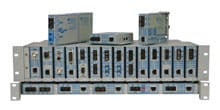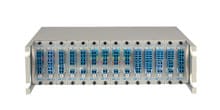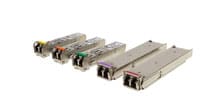- Products
- PoE Media Converters and Switches
- Ethernet & PoE Switches Product Selector
- Multi-Gigabit Ethernet and PoE Switches
- PoE PSE Commercial Switches
- PoE PSE Industrial Fiber Switches
- PoE Industrial Copper Extenders
- PoE Powered Media Converters
- PoE PSE Media Converters
- PoE Extenders & Injectors Product Selector
- Pluggable Transceivers Product Selector
- Single Pair PoE Products
- Product Lines
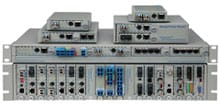
- iConverter Managed Multi-service Platform
- Copper to Fiber Media Converters
- Ethernet Media Converters
- 10 Gigabit Copper-to-Fiber
- 10/100/1000 Copper to 10 Gigabit Fiber
- 10/100/1000 Copper-to-Fiber with Integrated Management
- 10/100/1000 Industrial Copper-to-Fiber with Integrated Management
- 10/100/1000 Copper-to-Fiber with VLAN
- 10/100/1000 Dual Media Converter with VLAN
- Gigabit Copper-to-Fiber
- 10/100 Copper-to-Fiber with Integrated Management
- 10/100 Industrial Copper-to-Fiber with Integrated Management
- 10/100 Copper-to-Fiber with VLAN
- 10/100 Copper-to-Fiber
- Fast Ethernet Copper-to-Fiber
- Fast Ethernet Redundant Links
- 10Mbps Copper-to-Fiber
- 10Mbps Copper to Coax
- TDM Media Converters
- Serial Media Converters
- Ethernet Media Converters
- Fiber to Fiber Media Converters
- 10 Gigabit Fiber-to-Fiber Converter and Transponder
- 10 Gigabit Industrial Converter and Transponder
- SFP-to-SFP Fiber Converter and Transponder
- SFP-to-SFP Industrial Fiber Converter and Transponder
- Gigabit Fiber to-Fiber with 3 Rs
- 100/1000 Fiber-to-Fiber with 3 Rs
- Gigabit Fiber-to-Fiber
- Fast Ethernet Fiber-to-Fiber with 3 Rs
- Fast Ethernet Fiber-to-Fiber
- OC-3/STM-1 Fiber-to-Fiber
- OC-12/STM-4 Fiber-to-Fiber
- Carrier Ethernet Network Interface Devices
- CE 2.0 - 10G Demarcation NID
- CE 2.0 - 10/100/1000 Mult-port NID
- CE 2.0 - 10/100/1000 Mult-port NID with PoE
- CE 2.0 - 10/100/1000 8-Port NID
- CE 1.0 Service OAM - 10/100/1000 NID
- CE 1.0 Link OAM - 10/100/1000 Copper-to-Fiber NID
- CE 1.0 Link OAM - 10/100 Copper-to-Fiber NID
- CE 1.0 Link OAM - Gigabit Fiber-to-Fiber NID
- CE 1.0 Link OAM - Fast Ethernet Fiber-to-Fiber NID
- CWDM Multiplexers
- T1/E1 Multiplexers
- Ethernet Switch Modules
- Management System
- Chassis Options

- 1-Module Industrial Chassis
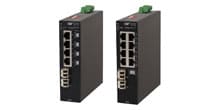
- RuggedNet Industrial Switches and Extenders
- Industrial PoE PSE Fiber Switches
- Multi-Gigabit Managed Industrial PoE+/BT Switches
- Multi-Gigabit Unmanaged Industrial PoE+/BT Switches
- 10G Managed 802.3bt PoE Switches
- 10G Unmanaged 802.3bt PoE Switches
- 10G Managed PoE+ Switches
- 10G Unmanaged PoE+ Switches
- 1G Managed PoE+ Switches
- 1G Unmanaged PoE+ Switches
- 1G Unmanaged 802.3bt PoE Switches
- 1G Managed 802.3bt PoE Switches
- Industrial SPE Switches
- Industrial Ethernet Switches
- Industrial PoE Copper Extenders
- Industrial Power Supplies

- OmniConverter Media Converter, Switches and Extenders
- PoE PSE Media Converters
- 10G Multi-Gigabit / Multi-Rate PoE Media Converter
- 10G Multi-Gigabit / Multi-Rate Media Converter
- 10/100 Multi-port PoE+ Media Converter
- 10/100 PoE+ Media Converter
- 10/100/1000 Multi-Port PoE+ Media Converter
- Industrial 10/100/1000 Multi-Port PoE+ Media Converter
- 10/100/1000 PoE+ Media Converter
- 10/100/1000 PoE++ 60W-100W Media Converter
- Industrial 10/100 Multi-port PoE+ Media Converter
- 1U Rack-Mount Shelf
- PoE PSE Compact Switches
- Multi-Gigabit Managed PoE+/BT Switches
- Multi-Gigabit Unmanaged PoE+/BT Switches
- 10G Managed 802.3bt PoE Switches
- 10G Unmanaged 802.3bt PoE Switches
- 10G Managed PoE+ Switches
- 10G Unmanaged PoE+ Switches
- 1G Managed PoE+ Switches
- 1G Unmanaged PoE+ Switches
- 1G Managed 802.3bt PoE Switches
- 1G Unmanaged 802.3bt PoE Switches
- Ethernet Switches
- Single Pair Ethernet (SPE)
- PoE Copper Extenders
- PoE Injectors
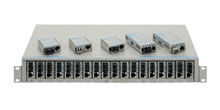
- miConverter Unmanaged Miniature Media Converters
- 10/100/1000 Copper-to-Fiber
- Industrial 10/100/1000 Copper-to-Fiber
- 10/100/1000 Ultra-Compact Copper-to-Fiber
- Gigabit Copper-to-Fiber
- 10/100/1000 Copper-to-Fiber PoE Powered
- 10/100 Copper-to-Fiber
- 10/100 Ultra-Compact Copper-to-Fiber
- 10/100 Copper-to-Fiber PoE Powered
- 18-Module Chassis
- Industrial 10/100 Copper-to-Fiber PoE Powered
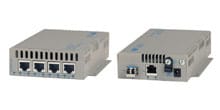
- FlexSwitch Compact Switches
- Solutions
- Company
- Support
- How to Buy
FAQs About Multi Gigabit Switches

Businesses and organizations demand networks that are not just fast—but lightning-fast. Enter Multi-Gigabit Switches: the game-changing networking solution that delivers speeds far beyond traditional Gigabit connections. Whether you’re transferring massive files, powering Wi-Fi 6 access points, or running cloud-based applications, the right switch can make all the difference.
At Omnitron Systems, we understand that choosing the right Multi-Gigabit Switch can feel overwhelming. From industrial multi gigabit switch options to enterprise-grade solutions, our guide breaks down everything you need to know. This article answers the most frequently asked questions, explains the benefits, and helps you identify the best multi gigabit switch for your unique needs.
Get ready to discover how Multi-Gigabit Switches can supercharge your network, boost productivity, and future-proof your digital infrastructure.
What Are Multi-Gigabit Switches?
Multi-Gigabit Switches are networking devices that operate at multiple speeds beyond the traditional 1G Ethernet standard. They support 1G, 2.5G, 5G, and sometimes even 10G, allowing businesses to future-proof their networks while using existing infrastructure.
Definition and Key Features
- Multi-speed ports: These switches automatically detect device speeds and adjust to optimize traffic flow.
- Plug-and-play installation: Many Multi-Gigabit Switches are easy to install, particularly unmanaged models.
- Backward compatibility: They integrate seamlessly with existing Gigabit devices.
- Low latency and high throughput: Ideal for streaming, video conferencing, VoIP, and cloud applications.
- Energy-efficient design: Some switches offer energy-saving features that reduce power consumption during low activity periods.
How Do They Differ From Standard Switches?
- Higher speeds: Multi-Gigabit Switches surpass the 1G limitation, allowing faster internal network communication.
- Scalability: Businesses can expand without replacing existing Cat5e/Cat6 cabling.
- Future-ready: Supports Wi-Fi 6 and some Wi-Fi 7 access points, PoE devices, and data-heavy operations without bottlenecks.
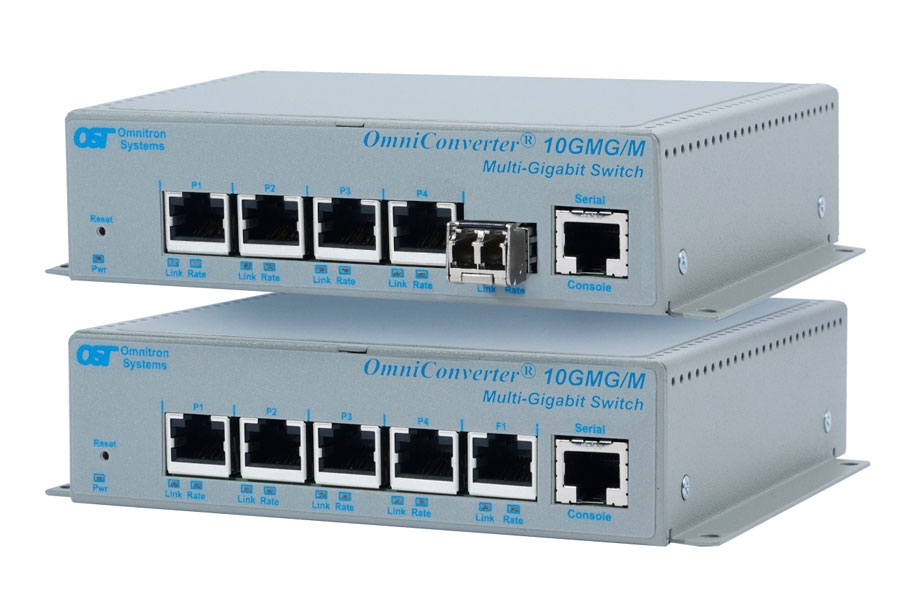
Why Should My Business Upgrade to Multi-Gigabit Switches?
Businesses that rely on cloud applications, high-volume data transfer, or multiple connected devices benefit significantly from upgrading to Multi-Gigabit Switches.
Key Benefits
- High-speed connectivity: Ideal for simultaneous large file transfers and cloud-based applications.
- Stable connections: Reduces network congestion and downtime.
- Future-proofing: Accommodates growth and new technology without requiring frequent upgrades.
- Enhanced productivity: Faster speeds lead to more efficient workflows and fewer interruptions.
Many IT managers often ask, “what are the advantages of using a multi-gigabit switch?” Key advantages include:
- Improved network throughput
- Reduced latency for real-time applications
- Enhanced support for Wi-Fi 6 devices
- Backward compatibility with existing Gigabit devices
- Scalability for future network growth
How Do Multi-Gigabit Switches Improve Network Performance?
These switches optimize the flow of network traffic, minimize bottlenecks, and ensure smoother operation for businesses of all sizes.
Performance Enhancements
- High-bandwidth support: Handles multiple devices with high data requirements simultaneously.
- Reduced latency: Vital for streaming, cloud applications, and VoIP communication.
- Load balancing: Some advanced switches distribute traffic evenly across ports.
- Enhanced Wi-Fi performance: Supports Wi-Fi 6 networks by preventing the switch from becoming a bottleneck.
Example: A small enterprise with 50 employees transferring large files across the network may notice delays on a standard 1G switch. A Multi-Gigabit Switch allows faster file sharing and reduces waiting time for collaborative projects.
How to Choose the Right Multi-Gigabit Switch?
Choosing the right Multi-Gigabit Switch requires considering network size, port requirements, features, and future growth.
Factors to Consider
- Number of ports: Determine how many devices will connect now and in the future. A 16 port multi gigabit switch is perfect for medium-sized offices or small data centers.
- PoE support: Power over Ethernet simplifies powering IP cameras, phones, and access points without separate power supplies.
- Managed vs unmanaged: Managed switches provide advanced controls such as VLANs, QoS, traffic monitoring, and security. Unmanaged switches are simpler and ideal for smaller networks.
- Operating Temp: industrial Multi Gig Switches are better suited for outdoor installs as they have specialized components rated for -40° to 75°C environments
- Compatibility: Ensure the switch integrates with your existing network setup.
- Warranty and support: Choose reputable brands with reliable customer support.
Tips for Different Business Sizes
- Small businesses: Consider cost-effective, smaller unmanaged switches.
- Medium businesses: Use larger multi gigabit switch for flexibility and scalability.
- Enterprise networks: Large managed switches with high throughput and monitoring tools are necessary.
How Do I Install Multi-Gigabit Switches?
Proper installation is essential for optimal performance and stability. Omnitron Systems provides a step-by-step guide for both managed and unmanaged switches.
Pre-Installation Checklist
- Verify cable types (Cat5e, Cat6, or Cat6a for higher speeds).
- Confirm power availability for PoE models.
- Plan the network layout including routers, servers, and endpoint devices.
Step-by-Step Installation
- Mount the switch in a secure location.
- Connect the switch to the network backbone or core router.
- For managed switches, configure IP addresses, VLANs, and QoS settings.
- Test connectivity and throughput using network tools.
- Enable additional features like port monitoring and redundancy as needed.
Tips for Optimization
- Label all ports for easier troubleshooting.
- Use Cat6a cables for higher speeds and longer distances.
- Enable monitoring on managed switches to detect bottlenecks early.
Can Multi-Gigabit Switches Work With Existing Network Cables?
Yes. Multi-Gigabit Switches are compatible with existing Cat5e or Cat6 cables. For full 10G performance, Cat6a or Cat7 cabling is recommended.
Example: Many offices can upgrade to a multi-gigabit switch without re-cabling, saving installation costs while improving performance.
Are Multi-Gigabit Switches Managed or Unmanaged?
Description:
Multi-Gigabit Switches come in both managed and unmanaged versions.
- Managed switches: Offer advanced features like VLANs, traffic prioritization, monitoring, and security controls. Ideal for larger or more complex networks.
- Unmanaged switches: Plug-and-play simplicity for small offices or home networks. No configuration required.
How Many Devices Can a Multi-Gigabit Switch Support?
Description:
The number of devices depends on the port count and switch capabilities.
- Small offices: 5–12 ports
- Medium offices: 16 ports, such as a 16 port multi gigabit switch
- Large enterprises: 48 ports or more, sometimes stacked for scalability
Tip: Always choose a switch with extra ports to accommodate future growth and avoid replacing the switch too soon.
Can Multi-Gigabit Switches Boost Wi-Fi 6 Performance?
Yes. Multi-Gigabit Switches prevent network bottlenecks and provide the bandwidth needed for Wi-Fi 6 access points, enabling faster and more reliable wireless connections.
Benefits for Wi-Fi 6
- Supports high-density environments with multiple users.
- Reduces latency for video conferencing and gaming.
- Provides reliable throughput for cloud-based applications and streaming services.
What Are Common Applications of Multi-Gigabit Switches?
Multi-Gigabit Switches are highly versatile and suitable for multiple environments.
Use Cases
- Office networks: Supports high-speed file transfers, VoIP, video conferencing, and cloud applications.
- Data centers: Handles heavy server-to-server traffic efficiently.
- Small businesses & smart homes: Connects Wi-Fi 6 devices, IP cameras, and streaming devices.
- Industrial settings: Used for IoT devices and automation systems requiring high bandwidth.
Example: A data center may use multiple Multi-Gigabit Switches to aggregate traffic from hundreds of servers while ensuring low latency and minimal downtime.
How to Identify the Best Multi-Gigabit Switch?
Choosing the best multi gigabit switch involves evaluating performance, reliability, and feature set.
Criteria for the Best Switch
- Port speed and count: Ensure it matches current and future needs.
- PoE options: Useful for powering devices like access points and cameras.
- Management features: VLAN, QoS, monitoring, redundancy.
- Build quality: Industrial-grade switches offer better durability and reliability.
- Vendor support: Choose a manufacturer known for excellent support and warranties.
FAQ Section
WHAT IS THE DIFFERENCE BETWEEN A GIGABIT AND MULTI-GIGABIT SWITCH?
Multi-Gigabit Switches operate at speeds above 1G, including 2.5G, 5G, and 10G. Standard Gigabit switches are limited to 1G per port.
DO I NEED NEW CABLES FOR MULTI-GIGABIT SWITCHES?
Existing Cat5e or Cat6 cables usually work, but for 10G speeds, Cat6a or Cat7 cables are recommended.
ARE MULTI-GIGABIT SWITCHES MANAGED OR UNMANAGED?
Both exist. Managed switches provide VLANs, QoS, and monitoring; unmanaged switches are plug-and-play.
HOW MANY DEVICES CAN A MULTI-GIGABIT SWITCH SUPPORT?
It depends on the port count, ranging from 5-port small models to 48-port enterprise switches.
CAN MULTI-GIGABIT SWITCHES IMPROVE WIFI 6 PERFORMANCE?
Yes. They support high throughput, reducing congestion and improving speed for Wi-Fi 6 devices.
Conclusion
Multi-Gigabit Switches are essential for modern networks, offering high-speed connectivity, scalability, and reliability. From industrial multi gigabit switches for extreme environments to the best multi gigabit switch for enterprises, Omnitron Systems provides solutions tailored for every network need. By upgrading to a Multi-Gigabit Switch, businesses can enhance productivity, reduce latency, and future-proof their infrastructure for emerging technologies.

